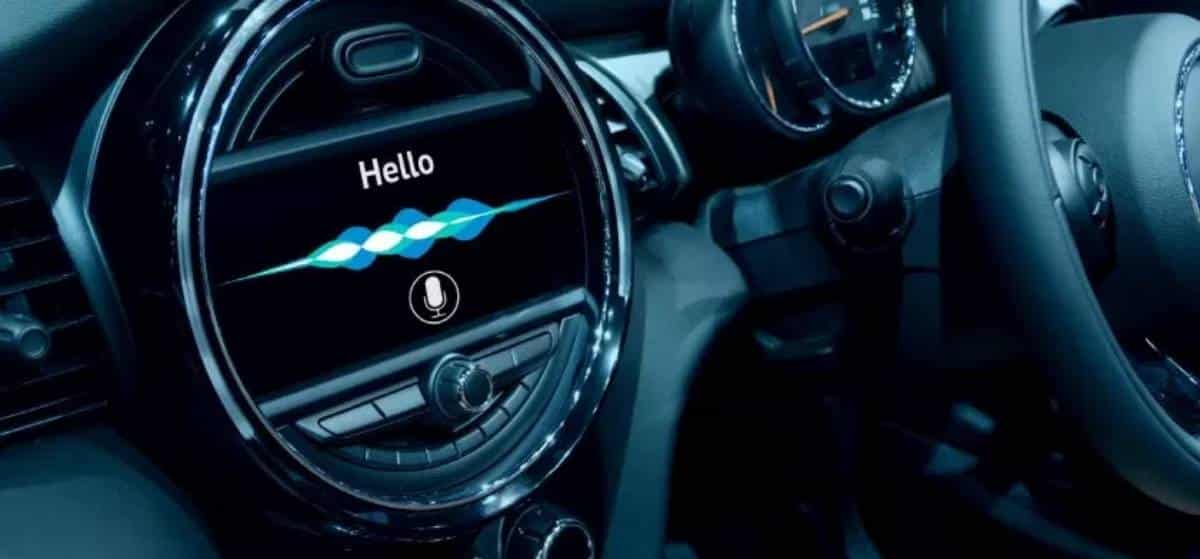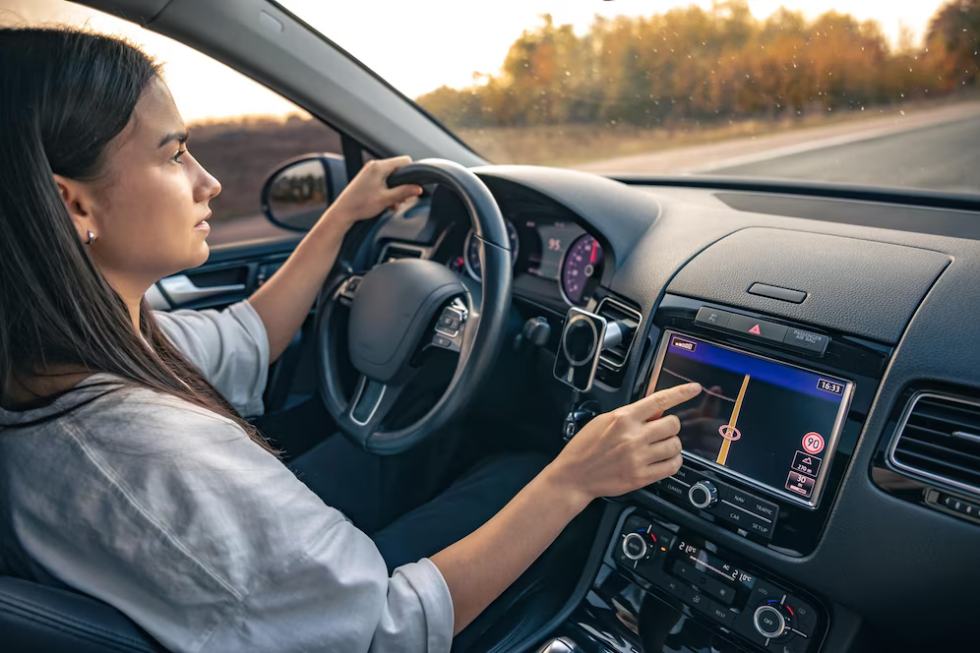
The Rise of Voice Assistants in Modern Vehicles
In recent years, the automotive industry has witnessed a seismic shift in the way we interact with our vehicles. One of the most significant advancements in this domain is the integration of voice assistants into modern vehicles. These advanced systems have changed how we drive. They provide a smooth mix of convenience, safety, and fun. In-car voice assistants are becoming more important. They play a key role in automotive infotainment. Understanding this connection is essential as we explore their impact.
Voice-controlled car systems are no longer a futuristic concept. They are a reality that is rapidly becoming a standard feature in new vehicles. These systems let you set navigation routes and control music playback hands-free. This improves safety and convenience. However, there are still misconceptions surrounding their functionality and effectiveness. Some sceptics question their reliability, while others are concerned about privacy issues. This blog will tackle these issues. It will show how in-car voice assistants are changing the automotive industry.
The Evolution of Voice-Controlled Car Systems
Voice assistants in vehicles have evolved significantly from their early iterations. Initially limited to basic commands such as initiating phone calls or playing music, today’s systems are far more advanced. They can interact with a wide range of vehicle systems, access online information, and even control smart home devices.
Ford SYNC and BMW’s iDrive were early adopters. Now, tech giants like Apple, Amazon, and Google have changed the game. Siri, Alexa, and Google Assistant have made interfaces smarter and easier to use. These systems now integrate into infotainment consoles. They support more languages, improve speech recognition, and handle complex commands better.
This progress shows how the automotive and tech industries are coming together. Vehicles are now more than just ways to get around. They are smart, connected hubs that help us live a more digital life.
Key Benefits / Why It Matters
Enhanced Safety
One of the primary benefits of in-car voice assistants is the enhancement of driver safety. These systems let drivers control functions without taking their hands off the wheel or eyes off the road. This greatly lowers the chance of accidents. A study by the National Highway Traffic Safety Administration (NHTSA) found that driver distraction is a top cause of road incidents. Voice-controlled car systems help reduce this risk. They let drivers make phone calls, send texts, or adjust climate controls just by using their voice.
In the UK, using a mobile device while driving is both dangerous and illegal. Voice assistants offer a safer, legal alternative. Features such as “read my messages,” “call home,” or “find the nearest car park” can be executed without ever glancing at the infotainment screen.
Improved Convenience
In-car voice assistants offer unparalleled convenience. Imagine finding the nearest petrol station, checking traffic updates, or playing your favourite playlist. You won’t need to touch buttons or screens. This convenience is great for long drives or when you’re in new places.
These assistants can now work in many languages and dialects. This helps users from various regions and backgrounds. Advanced assistants understand contextual queries. This lets users interact naturally, like in a conversation, instead of using rigid, scripted commands.

Personalised Experience
Voice-controlled car systems now learn and adapt to what each user likes. These systems analyse past interactions to give personalised suggestions. For example, they recommend routes by looking at traffic patterns. They also suggest music based on what you’ve listened to before. This level of personalisation enhances the overall driving experience, making it more enjoyable and tailored to individual needs.
Some systems can recognise users by their voice. They adjust seat positions, climate control, and infotainment settings. This creates a unique experience each time.
Integration with Other Technologies
In-car voice assistants are not standalone systems. They are part of a broader ecosystem of connected vehicle technologies. Many modern vehicles come equipped with advanced automotive infotainment systems that integrate voice assistants with features such as GPS navigation, multimedia playback, and smartphone mirroring (Apple CarPlay, Android Auto, etc.).
5G and vehicle-to-everything (V2X) communication will boost integration. They allow real-time data sharing with infrastructure, other vehicles, and smart cities. This will expand the use of voice commands.

Real-World Applications
The practical applications of voice-controlled car systems are vast and continue to grow:
- Navigation: Set your destination, check traffic updates, and reroute based on conditions—all without touching the screen.
- Communication: Make calls, send or read messages, and dictate emails while driving.
- Media Control: Play specific songs, switch radio stations, or stream podcasts hands-free.
- Vehicle Controls: Use your voice to adjust the temperature, switch driving modes, and control sunroofs or windows.
- Smart Home Integration: Turn off lights, set alarms, or check who’s at the front door before you even reach home.
Voice assistants are now a key part of the modern driving experience.
Additional Expert Tips & Common Mistakes to Avoid
Best Practices for Using Voice Assistants
To make the most of in-car voice assistants, it’s essential to follow a few key best practices:
- Calibration: Ensure the system is properly calibrated for your voice, accent, and language. Most systems have a setup process that improves recognition.
- Learning Commands: Familiarise yourself with available commands. Manufacturers often provide lists or tutorials that outline what the system can do.
- Environmental Awareness: Use voice commands in quieter settings when possible. Loud music or background conversations can impair recognition.
- System Updates: Always update your system. This helps you get new features, bug fixes, and better voice recognition.
Common Mistakes and Misconceptions
A frequent mistake is assuming voice assistants can understand any spoken sentence. NLP has made great strides, but these systems work best with clear commands. Don’t overload the system with complex, multi-part instructions unless it can handle them.
Another concern is privacy. Many users worry about in-car voice assistants “listening in.” Reputable manufacturers and software providers use strong data protection measures. Systems usually begin recording only after you say a wake word, like “Hey Google,” “Alexa,” or “Hey Mercedes.”
Still, it’s good practice to:
- Regularly check your system’s privacy settings
- Review stored voice data via your connected account
- Disable features you don’t use or feel comfortable with
Advanced Insights / Expert Recommendations
Future Trends in Voice-Controlled Car Systems
The future of in-car voice assistants is closely tied to the evolution of artificial intelligence. AI will keep improving these systems. They will better process natural language, spot emotional cues in voice, and respond with more human-like empathy and relevance.
Some key trends include:
- Multimodal Interfaces: Use voice along with gesture recognition or gaze tracking. This makes control easier and more intuitive.
- Emotion AI: It detects driver fatigue, stress, or irritation by analysing the tone of voice. Then, it adjusts responses based on these findings.
- Proactive Help: Voice assistants can guess your needs. For example, they might suggest a fuel stop based on where you’re going and how much gas you have left.
Industry Perspectives
Top car makers like Tesla, BMW, Mercedes-Benz, and Audi are pouring money into custom voice platforms. Others are teaming up with Amazon, Google, and Apple to use their systems.
For instance:
- BMW’s Intelligent Personal Assistant learns user habits over time.
- Mercedes-Benz’s MBUX uses natural voice processing to respond more conversationally.
- Amazon Alexa is now being built into various models by Ford and Toyota.
These integrations show fierce competition. It’s not only about better vehicles but also about creating superior digital experiences in the cabin.
Challenges and Limitations
Despite all the benefits, voice-controlled car systems are not without challenges:
- Accents and Dialects: Some systems still struggle with regional accents or slang.
- Connectivity Dependence: Many assistants require a constant internet connection to function fully.
- Driver Distraction: Badly designed systems can distract drivers. This happens when users have to repeat commands or check the screen for confirmation.
- Cybersecurity Risks: As cars get more connected, keeping voice data and network transmissions secure is key.
Addressing these issues requires ongoing collaboration between automakers, software developers, and cybersecurity experts.

From Novelty to Necessity: Voice Assistants in Cars
In-car voice assistants have changed how we use our cars. They provide safety, convenience, and personalisation like never before. As these systems continue to evolve, they will undoubtedly become an integral part of the driving experience. If you haven’t tried this technology yet, now is the time. Explore what voice-controlled car systems can do for you. Discover their benefits today!
As we move towards a future where connected vehicles are the norm, it’s essential for drivers to stay informed and adapt to new technologies. Whether you love tech or prefer to take it slow, knowing what in-car voice assistants can and can’t do will help you use this cool technology better.
Voice assistants are changing our journeys. They improve road safety and simplify daily routines. So, the next time you get behind the wheel, consider using voice commands to enhance your journey—and experience the future of driving today.